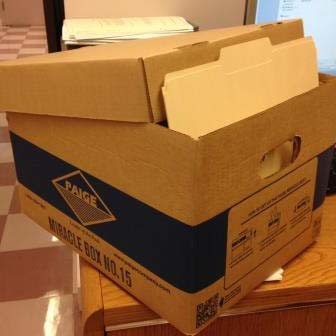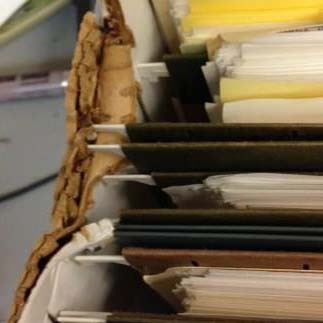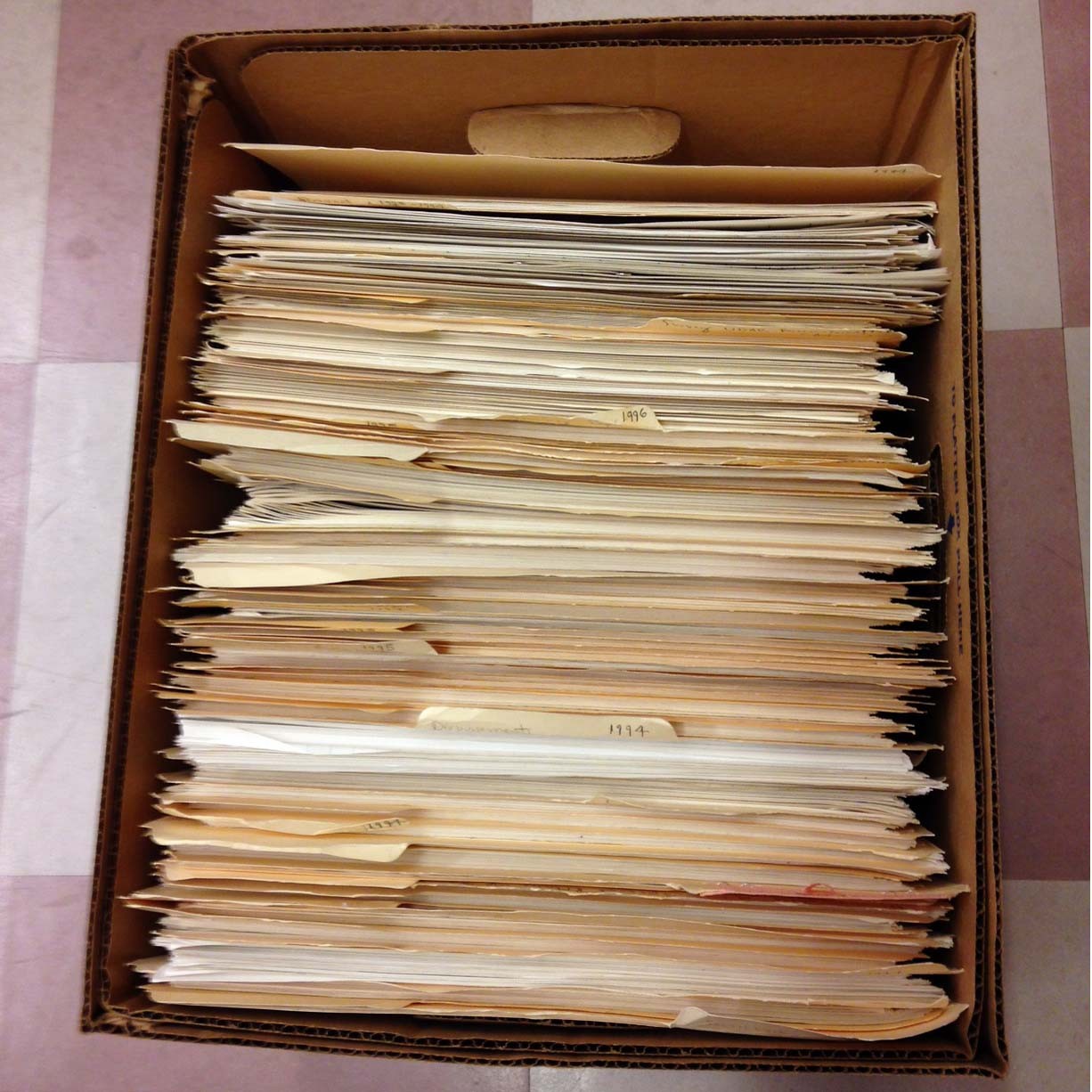SHIPPING MATERIALS TO RBML
WHEN YOU ARE READY TO PACK
Remove duplicate copies. If needed, keep no more than (2) copies of a publication or document
Digital and audiovisual media should not be packed inside cartons with paper records. Separate handling of these media is required for adequate preservation. If you have electronic media to transfer, please consult the curator.

Use the 1-cf. standard size record container
The box should be 12" x 15" x 10". Big enough for a letter size folder in the narrow side, but wide enough for a legal size folder on the wide side (but not wider or longer than that). The RBML will provide you with 12" x 15" x 10" boxes upon request.
Do not use long or transfile boxes. Their non-standard size makes them too heavy to handle.
Do not use Xerox or printer paper boxes. They are a non-standard size, have glued parts and are not built for long term storage. Ideally, boxes should not have glued parts. Glue has a limited shelf life so it's better when to use the ones with cardboard parts that fit together to form the box.
Do not use plastic bins. They are a non-standard size, do not fit on our shelves, and are not appropriate for long-term storage.
The records should be packed in the cartons in the same arrangement as they appeared in the file drawer. Keep records in their original file folders and/or jackets.

- Do not pack hanging folders: the metal hooks that help the files slide in the file drawers work like angry teeth on the cardboard. They also take up room in the box. If you must include hanging folders, put the files lengthwise in the box, to avoid them hanging on the cardboard edges.
- Assign a number to each box
- Create a box-level inventory, noting box number and box contents. (If possible and desired, you can create a folder-level inventory, listing folder titles within each box). Email the inventory to a curator you are working with and/or to the accessioning archivist.

Pack the boxes mostly full.
If a box is too full:
It is difficult to handle, too heavy
It is not easy to find and retrieve folders
Box fronts and handles tear easily
If a box is too empty:
Folders slide down or fall down
Records can bend, curve or get damaged
Records can slide out of folders and become misfiled
It is not easy to find and retrieve folders
A box should be mostly full, at least 75-80% full:
Folders need to be able to stay upright, remain standing
There should be enough room to find and retrieve folder
Use the hand/arm test: you should have enough room to fit a hand behind the folders; but not more room than if you put your arm behind the folders
Make sure that the box lid fits securely. The lid should lay flat on top of the box.
Some boxes are stacked one on top of another, so make sure that the box lid is not at an angle.
Some boxes are stored on shelves and if the lid doesn’t fit, the box will not fit on the shelf.
For binders, you may need to rest then on their side, if they are too tall on their spine. You might also consider removing the items from the binder.
WHEN YOU ARE READY TO SHIP
Shipping options: UPS or FedEx.
UPS is the best option in terms of cost. UPS labels will be generated by our Shipping and Receiving department. We must supply the weights of each box to the Shipping and Receiving department, as well as the exact address, name of contact, zip code, and phone number. The boxes need to have their weights written on them. UPS will bring the labels for the boxes at the time of pick up. It is not possible for us to schedule a UPS pick up for a particular day or time. Usually UPS will attempt the pick up the day following the generation of the UPS pick up request. UPS will make three attempts to pick up before cancelling the pick-up. There is no box limit on UPS. You need to make sure someone is present when UPS driver arrives to do the pick up
If you have a clear preference for FedEx over UPS we can accommodate such a request, but the paperwork needs to be approved in the Financial Services Office.
Label and weigh the box
Affix a label to each box; a label should include collection name and box number.
Secure the box lids to the box body with shipping tape.
Weight each box and write its weight on the side of the box, if shipping by UPS or FedEx
Necessary Information:
RBML needs the following information to organize the pick-up and generate shipping labels.
Address where the pick-up will take place
The contact name for the pick up
The amount of boxes being picked up
The weight of each box (round up to the nearest pound)
Telephone number of the contact person